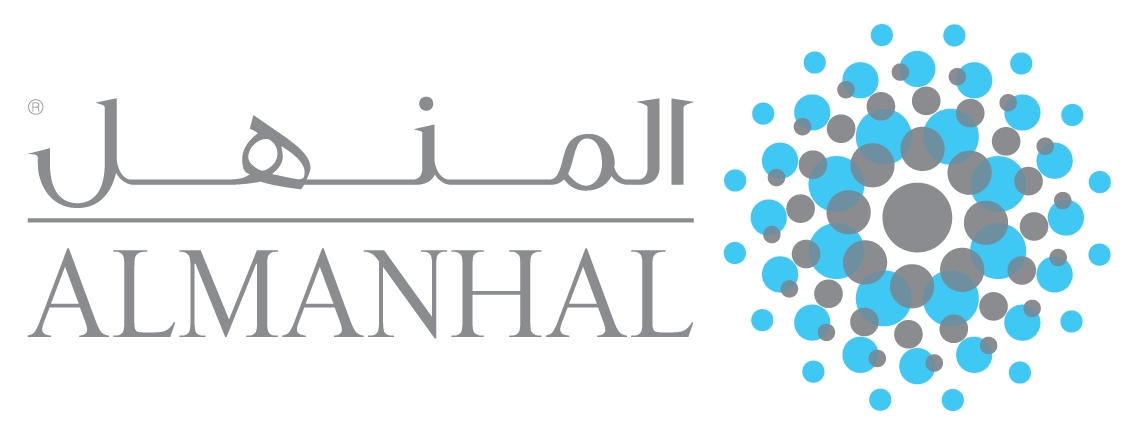Impact of Financial Crisis on Non-Traditional Income: Islamic Banks vis a vis Conventional Banks
DOI:
https://doi.org/10.31436/jif.v4i1.68Abstract
The present study aims to investigate the existing of shock due to the subprime financial crisis (2008) to the commercial banks performance in ASEAN-5 countries (Indonesia, Malaysia, Singapore, Thailand, and Philippine) particularly on the non-traditional activities aspect. Commercial banks in the present study are classified into Islamic and conventional banks. The data of 136 commercial banks in ASEAN-5 countries during the period of 2004-2012 from have been collected from the Bankscope database. The composition of sample based on type of bank is twenty samples are categorised as Islamic banks and the remaining 116 samples are under the category of conventional banks. We manage to run panel data regression using three estimation methods namely pooled-OLS, fixed effects and random effects methods. Based on the Breusch and Pagan Lagrangian Multiplier (LM) and Hausman tests, the random effects method is preferred. Islamic banks earn relatively lower non-traditional income compared to conventional banks. During the 2008 financial crisis commercial banks earn relatively lower non-interest income. Additionally, we find no evidence than Islamic and conventional banks non-traditional incomes are significantly different during the 2008 global financial crisis.Downloads
Download data is not yet available.
References
Allen, F., & Santomero, A. M. (2001). What do financial intermediaries do ? Journal of Banking & Finance, 25, 271–294.
Bank Negara Malaysia. (2006). BNM Annual Report 2005. Kuala Lumpur.
Beck, T., Demirgüç-kunt, A., & Merrouche, O. (2010). Islamic vs . Conventional Banking Business Model, Efficiency and Stability (No. 5446).
Brewer III, E. (1989). Relationship Between Bank Holding Company Risk and Nonbank Activity. Journal of Economics and Business, 41, 337–353.
Čihák, M., Demirgüç-Kunt, A., Peria, M. S. M., & Mohseni-cheraghlou, A. (2012). Bank Regulation and Supervision around the World A Crisis Update (No. 6286).
DeYoung, R., & Rice, T. (2004). Noninterest Income and Financial Performance at U.S. Commercial Banks. The Financial Review, 39(1), 101–127. doi:10.1111/j.0732-8516.2004.00069.x
DeYoung, R., & Roland, K. P. (2001). Product Mix and Earnings Volatility at Commercial Banks: Evidence from a Degree of Total Leverage Model. Journal of Financial Intermediation, 10(1), 54–84. doi:10.1006/jfin.2000.0305
DeYoung, R., & Torna, G. (2013). Nontraditional banking activities and bank failures during the financial crisis. Journal of Financial Intermediation, 22(3), 397–421. doi:10.1016/j.jfi.2013.01.001
Edwards, F. R., & Mishkin, F. S. (1995). The Decline of Traditional Banking: Implications for Financial Stability and Regulatory Policy. FRBNY Economic Policy Review, (July), 27–47.
Hidayat, W. Y., Kakinaka, M., & Miyamoto, H. (2012). Bank risk and non-interest income activities in the Indonesian banking industry. Journal of Asian Economics, 23, 335–343.
Ismail, A. G. (2010). Money, Islamic Banks and the Real Economy. Singapore: Cengage Learning Asia.
Lepetit, L., Nys, E., Rous, P., & Tarazi, A. (2008). The expansion of services in European banking: Implications for loan pricing and interest margins. Journal of Banking & Finance, 32(11), 2325–2335. doi:10.1016/j.jbankfin.2007.09.025
Matthews, K., & Thompson, J. (2008). The Economics of Banking (2nd Editio.). West Sussex: John Wiley & Sons Ltd. Retrieved from http://as.wiley.com/WileyCDA/WileyTitle/productCd-EHEP000955.html
Mishkin, F. S. (2010). The Economics of Money, Banking and Financial Markets (9th Edition) (p. 756). Boston: Pearson Education, Inc.
Rajan, R. G. (2005). Has Financial Development Made the World Riskier? (No. 11728).
Rogers, K., & Sinkey, J. F. (1999). An analysis of nontraditional activities at U.S. commercial banks. Review of Financial Economics, 8(1), 25–39. doi:10.1016/S1058-3300(99)00005-1
Shahimi, S., Ismail, A. G., & Ahmad, S. (2006). Panel Data Analysis of Fee Income Activities Islamic Banks. Journal of King Abdulaziz University-Islamic Economics, 19(2), 23–35. doi:10.4197/islec.19-2.2
Sinkey, J. F. (2002). Commercial Bank Financial Management (Internatio.). New Jersey: Pearson Education, Inc.
Stiglitz, J. E. (2000). Capital Market Liberalization , Economic Growth , and Instability. World Development, 28(6), 1075–1086.
Wall, L. D. (1987). Has bank holding companies’ diversification affected their risk of failure? Journal of Economics and Business, 39(4), 313–326. doi:10.1016/0148-6195(87)90025-7
Bank Negara Malaysia. (2006). BNM Annual Report 2005. Kuala Lumpur.
Beck, T., Demirgüç-kunt, A., & Merrouche, O. (2010). Islamic vs . Conventional Banking Business Model, Efficiency and Stability (No. 5446).
Brewer III, E. (1989). Relationship Between Bank Holding Company Risk and Nonbank Activity. Journal of Economics and Business, 41, 337–353.
Čihák, M., Demirgüç-Kunt, A., Peria, M. S. M., & Mohseni-cheraghlou, A. (2012). Bank Regulation and Supervision around the World A Crisis Update (No. 6286).
DeYoung, R., & Rice, T. (2004). Noninterest Income and Financial Performance at U.S. Commercial Banks. The Financial Review, 39(1), 101–127. doi:10.1111/j.0732-8516.2004.00069.x
DeYoung, R., & Roland, K. P. (2001). Product Mix and Earnings Volatility at Commercial Banks: Evidence from a Degree of Total Leverage Model. Journal of Financial Intermediation, 10(1), 54–84. doi:10.1006/jfin.2000.0305
DeYoung, R., & Torna, G. (2013). Nontraditional banking activities and bank failures during the financial crisis. Journal of Financial Intermediation, 22(3), 397–421. doi:10.1016/j.jfi.2013.01.001
Edwards, F. R., & Mishkin, F. S. (1995). The Decline of Traditional Banking: Implications for Financial Stability and Regulatory Policy. FRBNY Economic Policy Review, (July), 27–47.
Hidayat, W. Y., Kakinaka, M., & Miyamoto, H. (2012). Bank risk and non-interest income activities in the Indonesian banking industry. Journal of Asian Economics, 23, 335–343.
Ismail, A. G. (2010). Money, Islamic Banks and the Real Economy. Singapore: Cengage Learning Asia.
Lepetit, L., Nys, E., Rous, P., & Tarazi, A. (2008). The expansion of services in European banking: Implications for loan pricing and interest margins. Journal of Banking & Finance, 32(11), 2325–2335. doi:10.1016/j.jbankfin.2007.09.025
Matthews, K., & Thompson, J. (2008). The Economics of Banking (2nd Editio.). West Sussex: John Wiley & Sons Ltd. Retrieved from http://as.wiley.com/WileyCDA/WileyTitle/productCd-EHEP000955.html
Mishkin, F. S. (2010). The Economics of Money, Banking and Financial Markets (9th Edition) (p. 756). Boston: Pearson Education, Inc.
Rajan, R. G. (2005). Has Financial Development Made the World Riskier? (No. 11728).
Rogers, K., & Sinkey, J. F. (1999). An analysis of nontraditional activities at U.S. commercial banks. Review of Financial Economics, 8(1), 25–39. doi:10.1016/S1058-3300(99)00005-1
Shahimi, S., Ismail, A. G., & Ahmad, S. (2006). Panel Data Analysis of Fee Income Activities Islamic Banks. Journal of King Abdulaziz University-Islamic Economics, 19(2), 23–35. doi:10.4197/islec.19-2.2
Sinkey, J. F. (2002). Commercial Bank Financial Management (Internatio.). New Jersey: Pearson Education, Inc.
Stiglitz, J. E. (2000). Capital Market Liberalization , Economic Growth , and Instability. World Development, 28(6), 1075–1086.
Wall, L. D. (1987). Has bank holding companies’ diversification affected their risk of failure? Journal of Economics and Business, 39(4), 313–326. doi:10.1016/0148-6195(87)90025-7
Downloads
Published
2015-05-31
How to Cite
Alfarisi, M. F. (2015). Impact of Financial Crisis on Non-Traditional Income: Islamic Banks vis a vis Conventional Banks. Journal of Islamic Finance, 4(1), 31–38. https://doi.org/10.31436/jif.v4i1.68
Issue
Section
Articles












